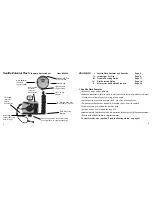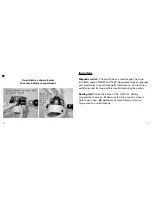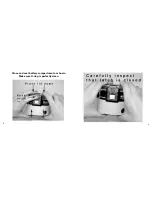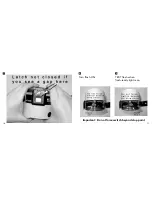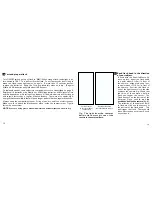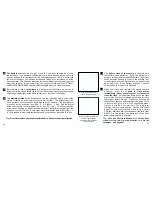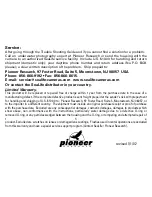
Bend flash head in the direction
of your subject.
4
If used with the SeaLife Macro 3X
close-up lens, direct the flash head
to a point about 3 ft (1m) in front of
the camera; without close-up lens,
to a point about 5 ft (1.5m) in front of
the camera. Position the flash so
one of the light sensors is to the side
or above the camera
(fig. A)
and that
the shine of the camera’s
built-in
flash can trigger the sensor. The
Flash Sensors on the bottom of the
External
Flash should
not be
positioned behind the camera
(fig. B)
.
The reflection of the camera’s
built-
in
flash must hit one the sensors at
the bottom of the flash head. This
will trigger the flash. There should
be no obstruction on this path, such
as your hand.
13
Do not position flash
sensor behind the camera.
Tip: The light from the camera’s
built-in flash must hit one of the
sensors in the external flash.
Position sensor
to the side or above
camera flash.
11
Test and prepare flash
3
Turn ON/OFF switch on top of flash to “
ON
” (When orange flash-ready light is on,
turn switch to TEST. This will test fire the flash. Count the seconds from firing to
when the flash-ready light comes on again. If more than 15 seconds passes,
replace the batteries. Keep the O-rings absolutely clean and dry. (Regular
Alkaline 4 AA batteries will yield about 100 flashes.)
To replace batteries, remove battery compartment cover as described on page 6.
Replace all 4 batteries with Alkaline or NiMH type batteries. NiMH recycle time
and life depends on mAh rating of the battery. A 1600 mAh battery will last longer
and recycle faster than a regular Alkaline battery. There are also newer high-
energy Alkalines available that will have longer battery life than regular Alkalines.
Always keep the compartment cover O-ring clean, dry and free of obstructions.
Make sure to re-attach the black spacer piece inside the compartment. Tightly
fasten the cover screw.
NOTE:
Do not use O-ring grease. Clean with water and mild detergent and allow to dry.
12
10


